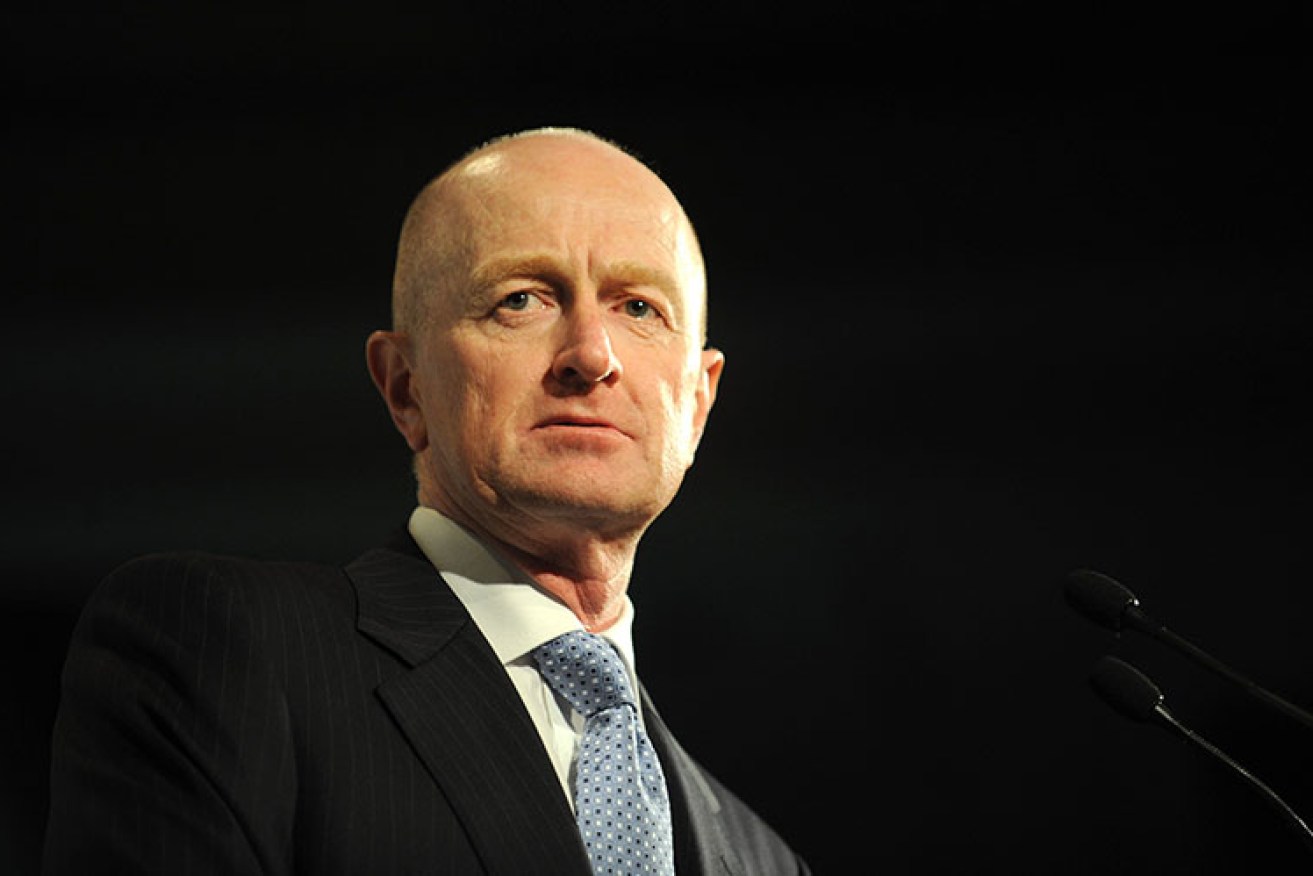Borrowers’ bonanza: rates cut to record low


RBA governor Glenn Stevens: rate cuts may be ineffective. Photo: AAP
After weeks of intense speculation, the Reserve Bank of Australia has cut interest rates for the first time in 18 months to a record low.
The cash rate has been cut to 2.25 per cent, the lowest it has ever been, as the RBA strives to support the local economy.
• Read the full RBA statement here
The decision pushed the value of the Australian dollar sharply lower. The local currency dropped to 76.84 US cents shortly after RBA’s decision, from 77.98 US cents just prior to the announcement.
A lower Australian dollar should boost the tourism industry, attracting more overseas visitors with more favourable exchange rates.
It is also good news for borrowers. A person with a $300,000 home loan will save about $45 a month. However, people who have savings accounts will be the big losers if the cut is applied to their accounts. (To see how much you will save, click the owl )
Borrowers and savers alike will be watching closely to see if their bank passes on the full cut. The Bank of Queensland and ME Bank have announced they will deliver the rate reduction in full to customers. ANZ Bank customers will need to wait until Friday, 13 February to learn of their bank’s decision.
Market watchers have now turned their attention to the next rates meeting, due at the start of March. Some economists are forecasting further rate cuts this year.
The share market, meanwhile, surged to a seven-year high, with the ASX 200 jumping from 5638 at 2:30pm to 5712 at 4pm.
What Glenn Stevens said
In his statement, RBA governor Glenn Stevens cited concerns about slowing economic growth and rising unemployment as reasons for the cut.
“Overall, the Bank’s assessment is that output growth will probably remain a little below trend for somewhat longer, and the rate of unemployment peak a little higher, than earlier expected,” Mr Stevens said. “The economy is likely to be operating with a degree of spare capacity for some time yet.”
Summing up the decision, he said: “This action is expected to add some further support to demand, so as to foster sustainable growth and inflation outcomes consistent with the target.”
Overall Mr Stevens’ statement was guarded, and gave no indication of whether we can expect another rate cut in the near future.
Joe Hockey’s response
Treasurer Joe Hockey welcomed the RBA’s decision, saying: “This is good news for families and it’s good news for Austrailian businesses.”
Combined with petrol prices falling, he said families had seen a 0.75 per cent reduction in interest rates in the last two months. He said he expected business confidence would improve, and that would mean more jobs. He also said he expects banks to “pass on these cuts immediately.”
He urged businesses to now “go and employ Australians”.
The business community welcomed the rate cut, with Australian Chamber of Commerce and Industry chief executive Kate Carnell saying: “We believe the reduction will give businesses a shot in the arm, and that will increase employment, which is what we all want.”
Ms Carnell said while the lower cost of borrowing was a positive for businesses, the real benefit would be an increase in consumption, putting more money in the pockets of consumers. That would be good for business, which in turn would be good for employment.
Low inflation, the wider world
Rob Hogg, senior consultant at Frontier Advisors, said the RBA’s decision was primarily a result of weak global economic conditions.
“The thing about the RBA is it tends to be more influenced by global events than any other central bank.”
He said sluggish global growth had seen central banks around the world decrease interest rates, and he said this would have influenced the RBA’s decision.
But one danger of cutting rates, he said, is that they can lead to consumers to spend too much, which can lead to inflation. But currently inflation is just below the RBA’s lower target threshold of 2 per cent, which means this not a major risk.
“It’s entirely possible we’ll see another cut in the near future,” Mr Hogg said.
Housing borrowing bonanza
Another danger of lower interest rates is that they could fuel a borrowing bonanza, possibly leading to a housing bubble.
Addressing these concerns, Mr Stevens said: “Dwelling prices have continued to rise strongly in Sydney, though trends have been more varied in a number of other cities over recent months. The Bank is working with other regulators to assess and contain economic risks that may arise from the housing market.”
But Mr Hogg said the lower rate is unlikely to fuel a housing bubble. “I don’t get the feeling there’s house price inflation galloping away.”
He said high house prices are limited to certain areas of Sydney and Melbourne.








